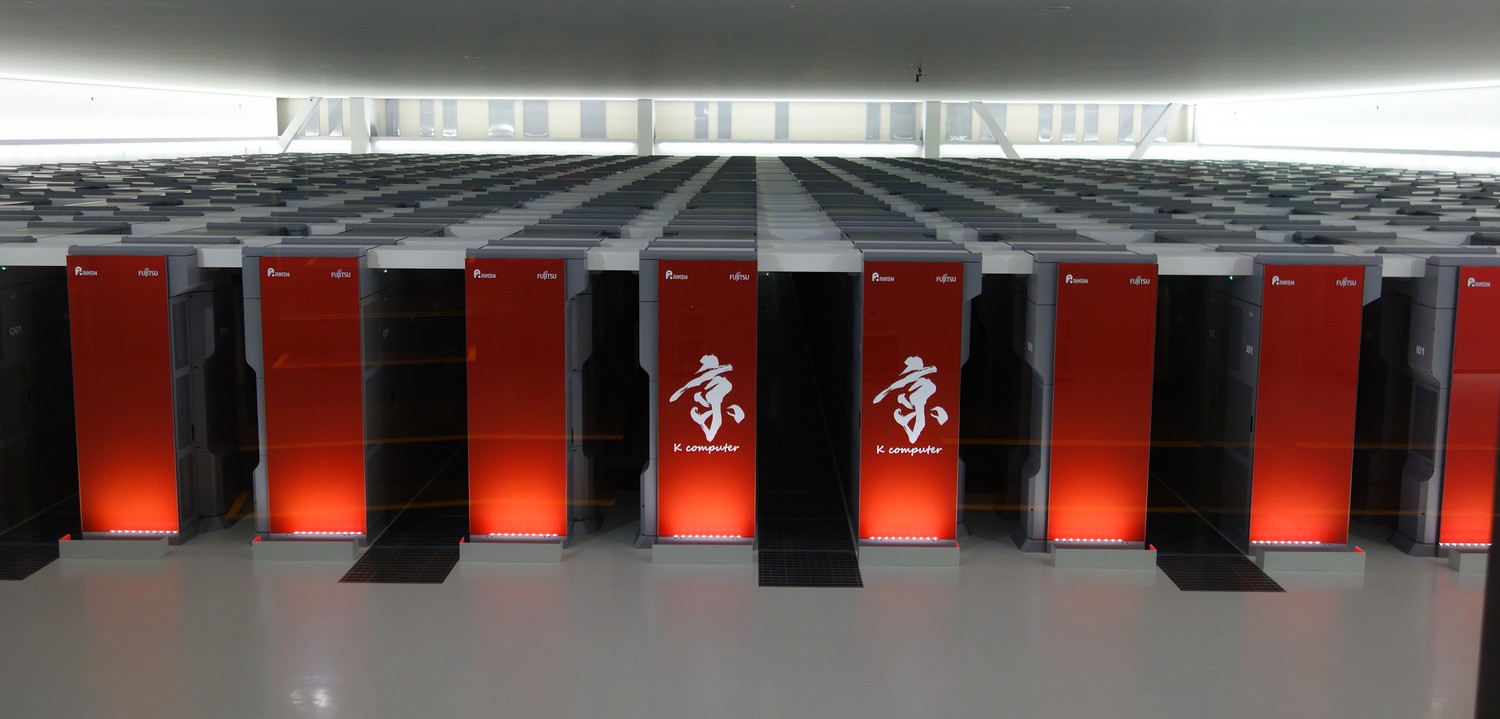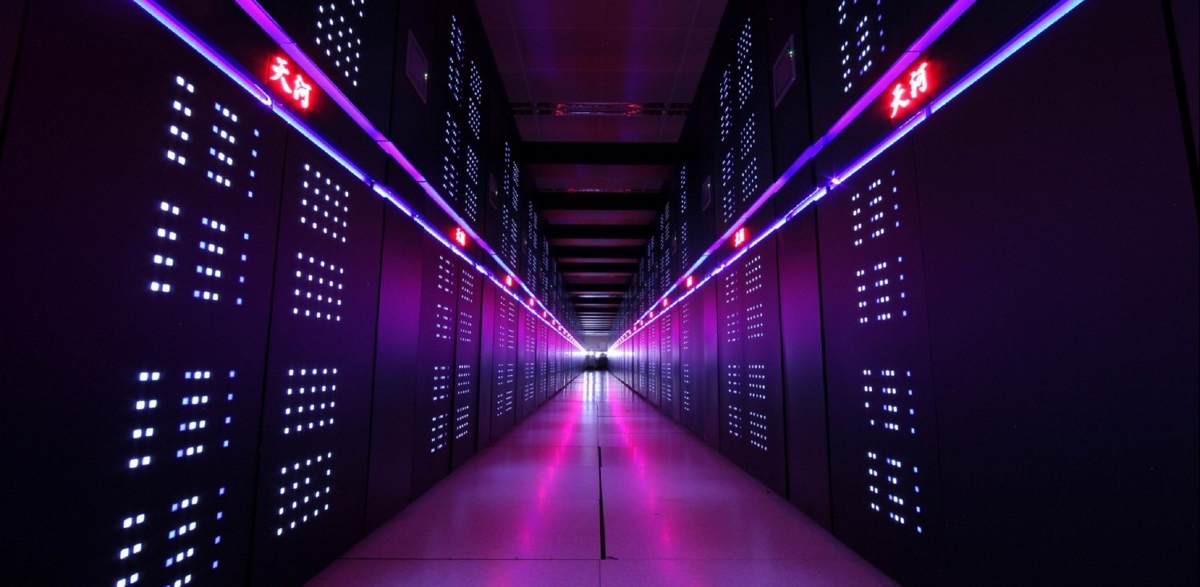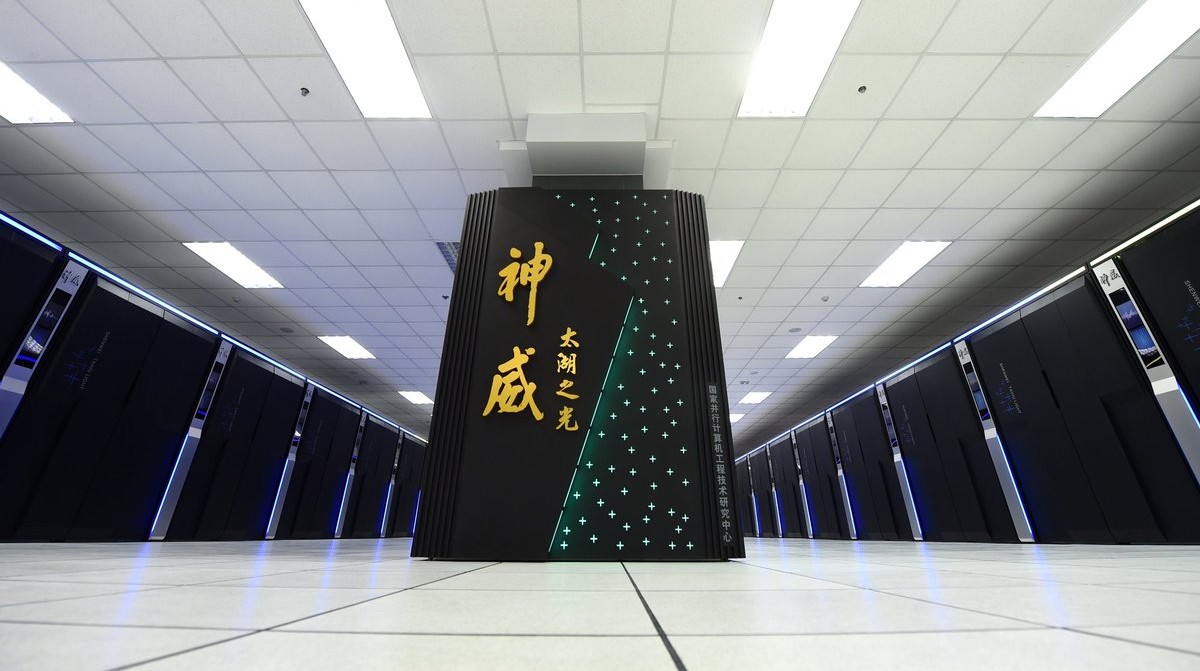Supercomputers are coming: TOP 10 most powerful computers in the world
We independently test the products and technologies that we recommend.

10. K computer (Japan)
Installed in 2011 at the Institute of Physical and Chemical Research in Kobe, the K computer is the oldest and weakest (if a 10-petaflop solution can be called such) representative of the top ten. For comparison, the Core i7-8700K processor performs floating point calculations at a speed of only 48 gigaflops, and the GeForce GTX 1080 graphics card at 11 teraflops. One petaflop equals one thousand teraflops or one million gigaflops.
 |
The K computer was built by the Fujitsu company (in our market it is better known as a manufacturer of air conditioners), which developed and manufactured 88,000 eight-core SPARC64 VIIIfx processors for it. Although this unique processor architecture loses to nine other supercomputers in the Linpack test (dense systems of linear algebraic equations), which is considered the main one in the formation of the TOP500.org rating, it still holds the lead in the alternative HPCG benchmark test (sparse matrices).
K computer also owns an anti-record among top ten supercomputers - the worst ratio of performance and power consumption (less than 1 PFLOPS per 1 MW). K computer is used for medical and climatic research.
9. Oakforest-PACS (Japan)
In ninth place in the world ranking of computing power TOP500.org is another "Japanese" - Oakforest-PACS from the Joint Center for Advanced High-Performance Computing with an indicator of 13 petaflops. And according to the results of the IO-500 benchmark, it is a supercomputer with the fastest disk subsystem, which consists of a DataDirect Networks ES14KX network file system with an average read-write speed of 600 GB / s and an additional Infinite Memory Engine cache with a speed of 742 GB / s for small files.
 |
The Oakforest-PACS was built by the aforementioned Fujitsu company, but already based on eight thousand much more energy efficient than the previously used SPARC, 68-core Intel Xeon Phi 7250 chips (5 PFLOPS per 1 MW), which are a cross between a processor and a video card (a large number relatively weak nuclei). Used by Oakforest-PACS for research in physics and chemistry.
8 – 7. Cori and Trinity (both in the US)
The Cori and Trinity supercomputers are quite similar: both are located in the US (National Energy Research Computing Center at Berkeley and Los Alamos National Laboratory, respectively), both are based on Intel Xeon Phi 7250 chips, both deliver 14 petaflops of performance, and both built by Cray Inc., which was once founded by the same Seymour Cray. Cori and Trinity are running the Cray Linux Environment operating system, capable of handling a million processor cores and a petabyte (million gigabytes) of RAM. The main area of application for Cori and Trinity is the nuclear power industry.
 |
6. Sequoia (USA)
While the vast majority of the top ten supercomputers use video cards, the Sequoia at Livermore National Laboratory, like the aforementioned K computer, is built the old fashioned way on CPUs alone. And taking into account the fact that the builder of Sequoia is IBM, then the processors were chosen IBM A2 with 16 cores of the Power ISA architecture. The total number of cores is 1.5 million, resulting in a performance of 17 petaflops.
 |
Sequoia is controlled by the Red Hat Enterprise Linux operating system, which, unlike the purely supercomputer Cray Linux Environment, is quite suitable for home or office use. With the help of Sequoia, astronomical phenomena and the human genome are studied.
5. Titan (USA)
There is a misconception among gamers and PC enthusiasts that AMD processors don't pair well with NVIDIA graphics cards. “No matter how it is!” Cray Inc. engineers, who built the 17 petaflops Titan supercomputer at the Oak Ridge National Laboratory (one of Cray’s oldest and most regular customers), say with iron confidence.
 |
Moreover, Titan was built not from scratch, but by “upgrading” the previously existing Jaguar supercomputer. To the already existing 16-core AMD Opteron 6274 processors, NVIDIA Tesla K20X server video cards were added, each with 2688 CUDA micro-cores. Thanks to Titan, scientists were able to simulate the processes of fuel combustion, changes in the magnetic properties of materials under the influence of temperature, and the behavior of neutrons in a nuclear reactor.
4. Gyoukou (Japan)
The most powerful computing system in Japan is Gyoukou (19 PFLOPS), which was jointly designed by ExaScaler and PEZY Computing for the Agency of Marine and Earth Sciences and Technology. Unusually, the 16-core Xeon D-1571 and 2048 micro-core PEZY-SC2 co-processors are cooled by being completely immersed in an oily liquid.
 |
Of all the supercomputers in the world, it is Gyoukou that is the most multi-core (almost 20 million microcores in total), as well as the most energy efficient of the top ten (15 PFLOPS per 1 MW). It is equipped with the CentOS operating system (also suitable for the home) and the Earth Simulator software suite, designed to predict climate change for many years to come.
3. Piz Daint (Switzerland)
The Swiss National Supercomputing Center has three supercomputers from the TOP500.org list at once, the most powerful of which is Piz Daint. Initially, its power was only 6 petaflops, but a few years later it was upgraded to 20. As a result, it became not only the most powerful in Europe, but also the third in the world, ahead of Japanese and American systems.
 |
Built by Cray, Piz Daint is based on 12-core Xeon E5-2690v3 processors and NVIDIA Tesla P100 server graphics cards with 3840 CUDA microcores (only Tesla V100 with 5120 microcores is newer and more powerful). The main field of application is the life sciences (biology, medicine and their modern derivatives).
2. Tianhe-2 (China)
The two most powerful supercomputers in the world today belong to China. The former leader, and now number two - Tianhe-2, developed by Inspur (33 PFLOPS) - is installed at the PLA Defense Science and Technology University in Changsha. It is based on 12-core Intel Xeon E5-2692 processors and 57-core Intel Xeon Phi 31S1P coprocessors. Tianhe-2 has a record high power consumption of 18 MW. This supercomputer is engaged in the analysis of data on state security issues.
 |
1. Sunway Taihu Light (China)
Finally, the undisputed number one is Sunway TaihuLight from the National Supercomputing Center in Wuxi with a power of 93 petaflops, which is already three times the nearest pursuer. It was possible to achieve such high performance thanks to the RISC processors of our own Chinese design - Sunway SW26010 with 4 powerful cores and 256 micro-cores. The total number of Sunway TaihuLight cores was 10 million (second in the world), and the amount of RAM was a record 1.3 exabytes (billion gigabytes). Sunway TaihuLight's main areas of research are industrial design, pharmacology and oil exploration.
 |
Future prospects
Due to the large lead over the pursuers, Sunway TaihuLight will most likely remain the world leader for more than one year. Moreover, by adding cabinets with rack servers, its performance theoretically can be increased to 100+ petaflops. But in the top ten TOP500.org with the next update of the rating in the summer of 2018, there will definitely be progress. For example, a 15-petaflop HPC4 supercomputer owned by the Italian oil and gas company Eni (the most powerful non-state supercomputer) has already been put into operation near Milan. And in a couple of months, the Jülich Research Center should complete the construction of a new German “supercomputer” Atos BullSequana X1000 (12 PFLOPS), which, together with the existing JUQUEEN and JURECA, will simulate the work of the human brain.
Twelve-year history of Intel in one article.
How AMD processors have evolved from 2006 to the present.
Irreplaceable accomplices in long-term maintenance of hot drinks warm, and cold drinks - cold.
Sports nutrition to work on reducing the amount of subcutaneous fat and sculpted body.
A selection of balanced representatives of the middle price segment for work, study and more.

















































